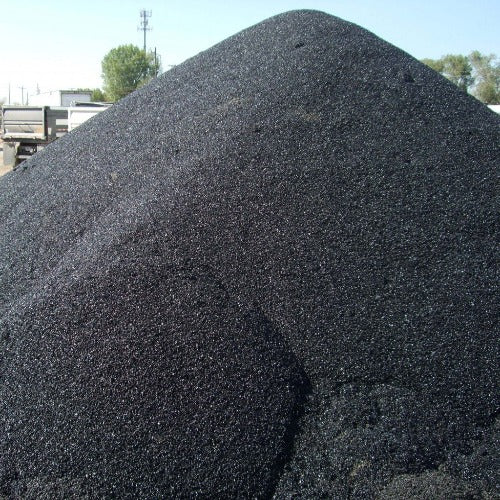Cold Mix Asphalt Applications: Versatile and Cost-Effective
Wiki Article
Cold Mix Asphalt: Reinventing the Building Market
The introduction of cool mix asphalt has stimulated a substantial shift in the construction market, offering a practical method that addresses both price and ecological concerns. With advancements in modern technology and products, chilly mix asphalt is poised to redefine building and construction methods, leading the method for a more sustainable and high-performance future.Benefits of Cold Mix Asphalt
Cold Mix Asphalt supplies an affordable and environmentally pleasant service for various construction applications. Compared to conventional warm mix asphalt, chilly mix asphalt can be produced and used at lower temperature levels, decreasing energy consumption and greenhouse gas exhausts throughout manufacturing. This lower production temperature also permits extended paving periods in chillier climates, enhancing adaptability in construction organizing.An additional significant benefit of Cold Mix Asphalt is its versatility out of commission and upkeep tasks. Its ability to be accumulated for long durations without setting makes it excellent for emergency repair services and remote places where hot mix asphalt may not be readily offered. In Addition, Cold Mix Asphalt is easy to move and take care of, streamlining on-site application and reducing general project timelines.
Moreover, using Cold Mix Asphalt advertises sustainability in construction practices by using recycled materials such as reclaimed asphalt pavement (RAP) and recycled asphalt tiles (RAS) By lowering the need for virgin materials, Cold Mix Asphalt assists save natural deposits and reduce land fill waste. In general, the advantages of Cold Mix Asphalt make it a useful asset in modern construction projects.
Convenience in Construction Tasks

In urban setups where noise and website traffic disruptions have to be reduced, Cold Mix Asphalt offers a quieter application process contrasted to typical hot mix asphalt, allowing for smoother job execution. Its versatility additionally enters into play in backwoods where access to warm mix plants may be limited, offering a functional alternative for roadway repair and maintenance. On the whole, the versatility and adaptability of Cold Mix Asphalt make it a valuable property in the building market, dealing with a large variety of job demands.
Environmental Advantages of Cold Mix
With an expanding focus on lasting construction methods, the environmental advantages of Cold Mix Asphalt are becoming significantly significant in modern task factors to consider. Furthermore, Cold Mix Asphalt can be produced making use of recovered asphalt sidewalk (RAP), which helps in preserving all-natural sources and minimizing waste sent to land fills.Furthermore, the application of Cold Mix Asphalt needs much less power usage on-site since it can be stocked for extended periods without the need for reheating, unlike hot mix asphalt. This not only lowers carbon emissions during construction however additionally decreases disturbance to the surrounding setting. Moreover, the lower temperature levels required for laying Cold Mix Asphalt bring about lowered gas consumption by construction tools, further adding to environmental conservation efforts. Overall, Cold Mix Asphalt presents a sustainable and environmentally friendly choice in building tasks.

Cost-Effectiveness and Efficiency
In terms of project budgeting and functional performance, the cost-effectiveness and efficiency of making use of Cold Mix Asphalt in construction tasks are paramount considerations. Cold Mix Asphalt uses significant expense advantages compared to typical hot mix asphalt because of reduced energy usage during production and decreased labor costs. The capacity to be stocked for extended durations without setting enables for bulk getting and reduces material waste, more contributing to cost-effectiveness.
Moreover, the performance of Cold Mix Asphalt exists in its adaptability and convenience of application. The fast curing time of Cold Mix Asphalt allows quick project completion, minimizing downtime and interruptions to traffic flow.
Future Trends and Innovations
An arising trend in the building industry involves the combination of lasting products and advanced modern technologies to boost the efficiency and environmental influence of asphalt services. As the concentrate on sustainability expands, the future of chilly mix asphalt is likely to see further innovations in green formulations and production methods. Advancements such as the usage of recycled materials like recovered asphalt sidewalk (RAP) and cozy mix asphalt (WMA) are gaining traction as asphalt repair a result of their lowered power consumption and reduced emissions compared to conventional hot mix asphalt.In addition, the integration of modern technologies like self-healing asphalt, which can repair tiny fractures on its very own, and the development of smart asphalt with sensors to keep track of roadway conditions and web traffic circulation are on the horizon. These improvements not only boost the toughness and durability of road surfaces but also contribute to boosted security and efficiency in transport systems. Generally, the future of chilly mix asphalt is positioned to reinvent the construction market by supplying lasting, high-performance remedies that satisfy the evolving demands of our framework while minimizing ecological effect.

Final Thought
In conclusion, chilly mix asphalt is changing the building industry with its affordable, eco friendly, and functional features. With the integration of sustainable products and advanced modern technologies, chilly mix asphalt is shaping the future of building and construction practices towards more environmentally friendly and high-performance services.Report this wiki page